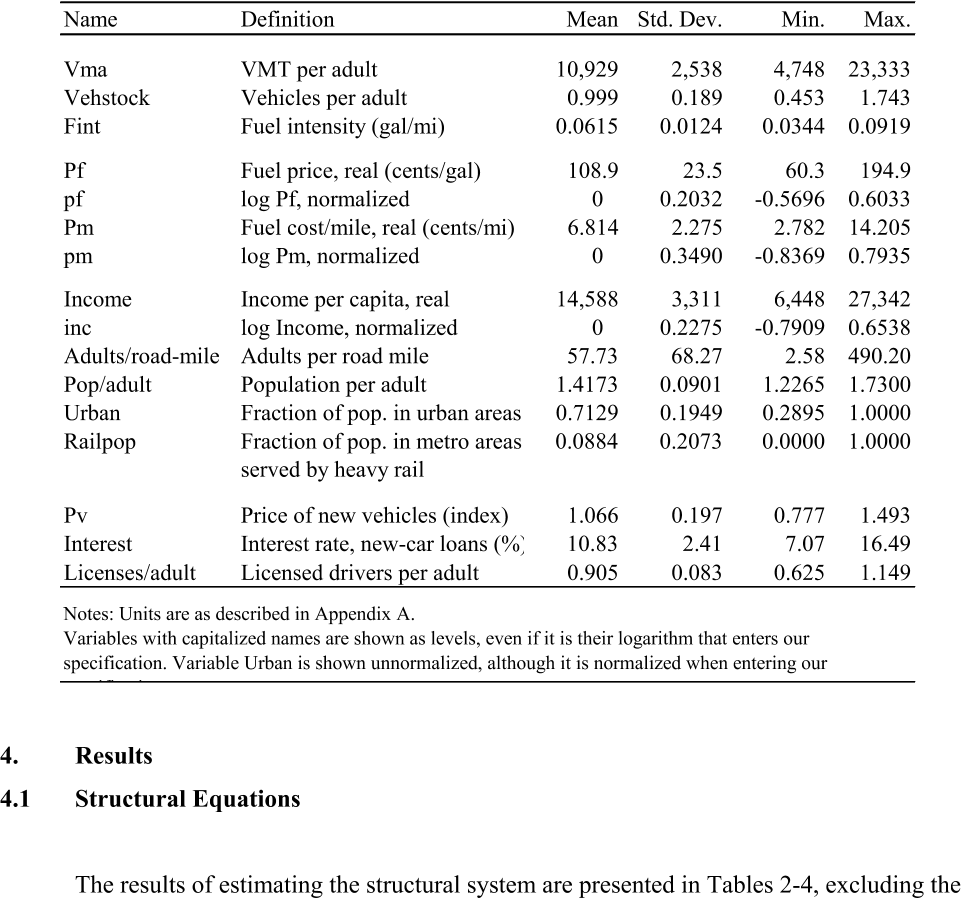




read more











The question of CAFE ’ s effects remains an interesting area for future research, and the authors believe their approach offers a better chance of resolving it than previous attempts. To make further progress probably requires estimating models that disaggregate the passenger-vehicle fleet into the two categories, cars and light trucks, that are regulated differently under CAFE.
Obtaining reliable measures of it is important because it helps determine the effectiveness of measures intended to reduce fuel consumption and because increased driving exacerbates congestion and air pollution.
In their work, the authors eliminate the spurious effects of such crosssectional correlations by using fixed-effects specification, i.e. by including a dummy variable for each state.
Goldberg (1998) estimates the rebound effect using the Consumer Expenditure Survey for the years 1984-1990, as part of a larger equation system that also predicts automobile sales and prices.
the stability of the simplified specification lends support to the view that the model is well specified, making 3SLS a suitable estimator.
Two recent studies use micro data covering several different years, thereby takingadvantage of additional variation in fuel price and other variables.
Because their model has a dynamic component, it could predict the year-by-year response to such a policy while taking into account projected changes in income and fuel prices — although the reliability of doing so diminishes if projected values lie outside the ranges observed in their data.
Their best estimates of the rebound effect for the US as a whole, over the period 1966-2001, are 4.5% for the short run and 22.2% for the long run.
These aggregate studies highlight the possible importance of lagged dependent variables(inertia) for sorting out short-run and long-run effects.
22 Their implied long-run elasticity of VMT with respect to road-miles is 0.020//(1-0.7907)≈0.1, considerably smaller than the long-run elasticities with respect to lane-miles of 0.8 found by Goodwin (1996, p. 51) and Cervero and Hansen (2002, p. 484).
In terms of policy, the full specification with 3SLS also happens to be the most conservative approach in explaining their main result, which is that the rebound effect declines with income.
Thus the average rebound effect in this sample is estimated to be approximately 4.5% in the short run, and 22.2% in the long run.respectively.
the authors believe that this richer specification is unreliable because it over-fits the data: coefficients on a variable and its lag are in several instances large and opposite in sign, and the predicted desired fuel intensity show implausible oscillations over time.
the authors believe their base specification is the most suitable one given the short time period over which the authors can observe pre-CAFE behavior.